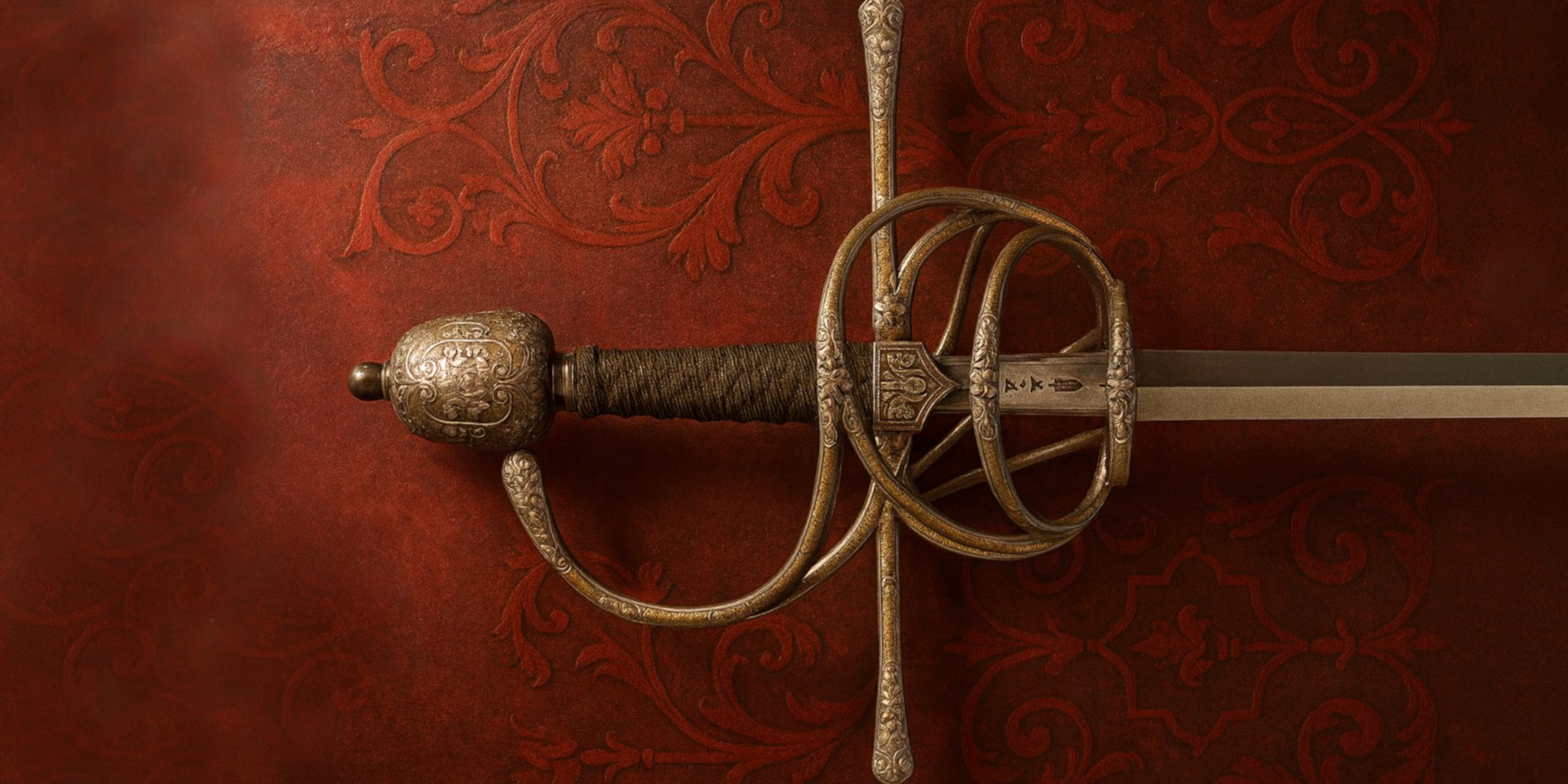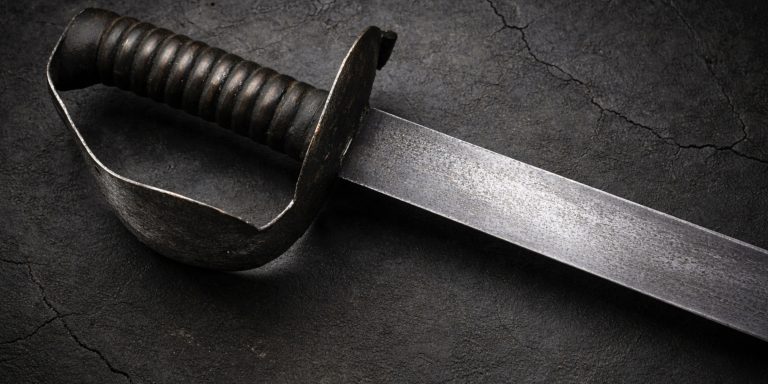
The swept-hilt rapier is a one-handed thrusting sword that rose to prominence in 16th- and 17th-century Europe. Its defining feature is a guard of intricately curving bars designed to protect the wielder’s hand. The design was as much a statement of status as it was a tool of self-defence, and it came to symbolise the refined, duelling culture of the Renaissance.
Specification
| Feature | Typical Specification |
|---|---|
| Overall length | ~43 inches (108 cm) |
| Blade length | ~37 inches (94 cm) |
| Blade material | High-carbon steel (e.g. 1075), or tempered modern equivalents |
| Guard | Sweeping bar guard, often of mild or stainless steel |
| Grip | Wooden core, wrapped in wire, cord, or leather |
| Weight | ~2.0–2.1 lb (approx. 1 kg) |
History and Evolution
The swept-hilt rapier evolved from earlier civilian arming swords and side-swords used in Spain and Italy. By the late 1500s, swordplay in Europe was shifting towards thrust-focused techniques. As rapiers became longer and narrower, their hilts also grew more elaborate to offer better hand protection.
The swept-hilt emerged as a response to this need. It combined function and ornamentation in a way that aligned with the Renaissance obsession with elegance and courtly manners. By the 17th century, the swept-hilt gave way to the cup-hilt, which provided even greater protection. Eventually, lighter smallswords and duelling épées replaced the rapier altogether.
Advantages and Disadvantages
Advantages
- Superior hand protection from the complex bar guard
- Long reach and strong thrusting ability
- Visually striking and historically representative
Disadvantages
- Not optimised for cutting or slashing
- Somewhat bulky in tight spaces
- Less protection than a full cup-hilt
Comparison with Similar Weapons
Compared to earlier ring-hilt rapiers, the swept-hilt offers better coverage for the fingers and back of the hand. It is more elegant and refined than the simpler side-sword, which was broader and more cut-oriented. Against the later cup-hilt rapier, the swept-hilt appears more open and vulnerable, though arguably more graceful in design. For those looking to compare practicality, the swept-hilt sits somewhere between function and form, a middle point in the evolution of European thrusting swords.
Legacy
The swept-hilt remains a favourite among historical fencing groups and stage performers. It is commonly used in theatrical productions and HEMA circles that study 16th-century combat manuals. Its reputation as the archetypal Renaissance sword persists in film, television, and fantasy design.
Where to See
Original swept-hilt rapiers can be found in museum collections across Europe, particularly in institutions with Renaissance or military arms sections. The Wallace Collection (London), Royal Armouries (Leeds), and the Museo Stibbert (Florence) are known to have well-preserved examples.
Collector’s Guide and Auction Prices
Reproductions are widely available and vary in quality and price.
- Entry-level replicas: £150–£250
- Hand-forged, historically accurate versions: £300–£400
- Custom or limited-edition reproductions: £500+
- Authentic antiques (when available): £2,000–£10,000+, depending on condition and provenance
Collector Tips:
- Look for high-carbon steel and peened construction if seeking a functional piece
- Avoid stainless steel if intended for training or cutting
- Provenance, maker marks, and engraved details add value to antique examples
- Always inspect the condition of the hilt bars and grip wrapping
- Be cautious of replicas passed off as antiques in online marketplaces
The swept-hilt rapier sits at a cultural crossroads. It’s a weapon, an art object, and a snapshot of an era where duelling, fashion, and martial skill were tightly interwoven. Whether displayed on a wall or wielded in a fencing salle, it continues to represent a distinct chapter in the story of European arms.
Watch the comparison review: Swept hilt vs Cup hilt:



